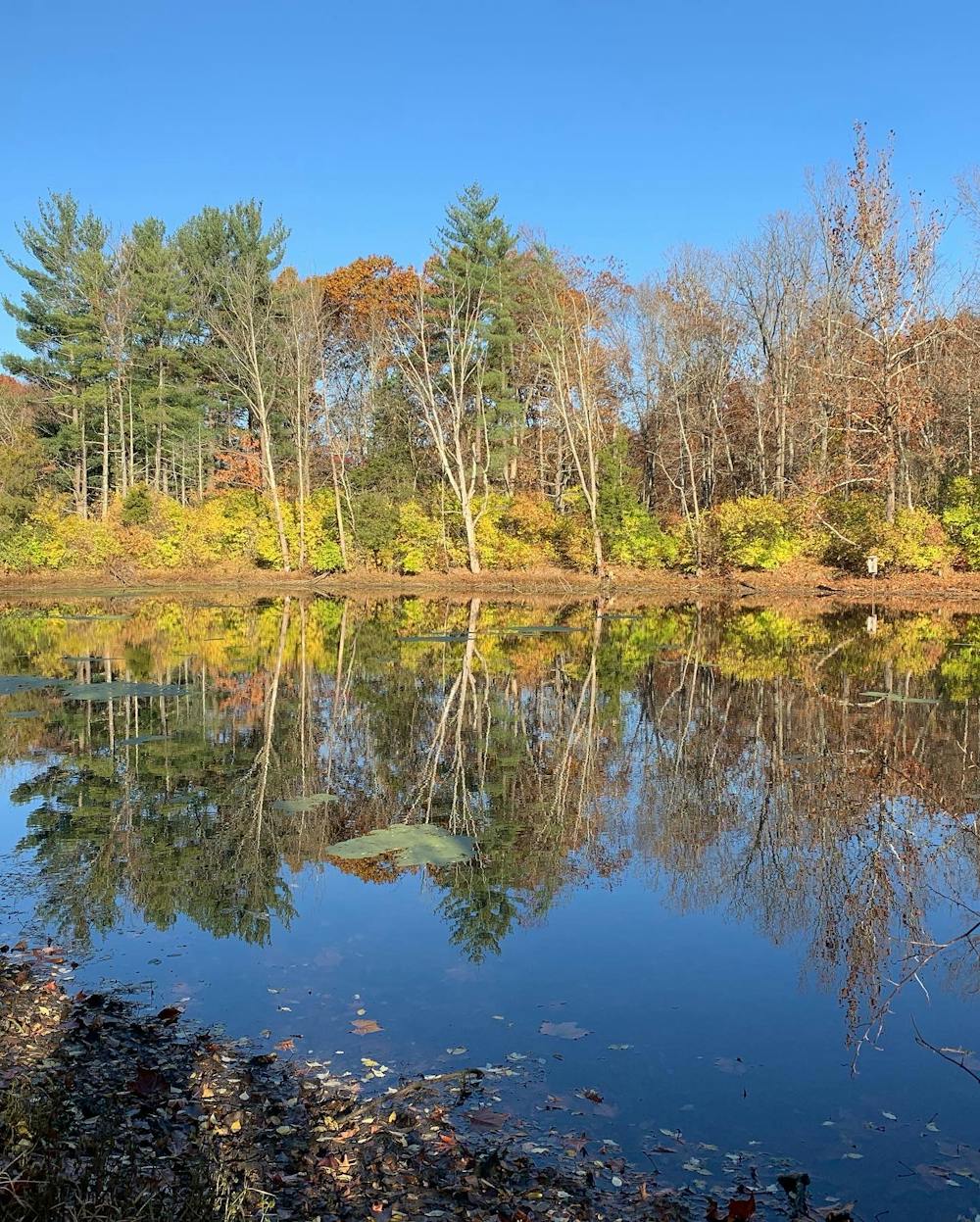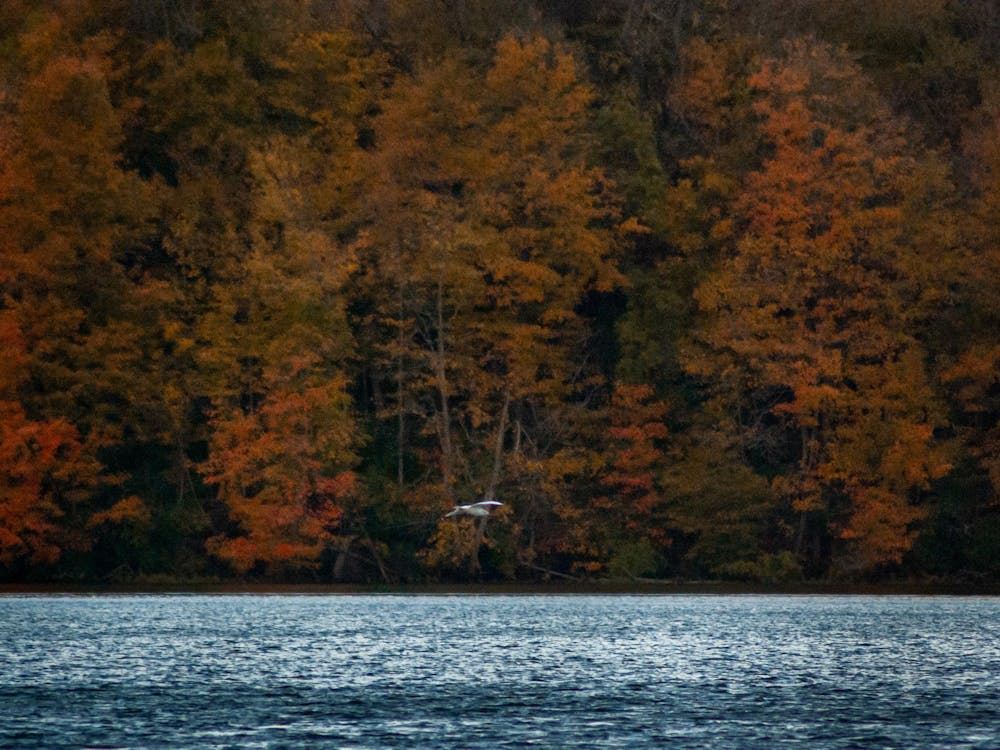Oxford, Ohio, is a small college town surrounded mostly by farm fields. Without the amenities of a big city like Cincinnati, students often choose activities such as eating out, going to events at Oxford Memorial Park, partying with friends or hanging out on campus to pass the time outside of classes.
But bordering Miami University’s beautiful campus is another amazing, though often overlooked, place to spend your free time, Miami's Natural Areas.
Where to get started exploring Miami’s Natural Areas
Stretching out over 1,000 acres of protected land, the Natural Areas are not just a small park to pass by. The woods border the entire eastern, southern, and northeastern edge of campus, following the meandering Harkers Run stream.
There are many activities to do in the Natural Areas, but the most obvious is hiking. A popular spot begins from the DeWitt Cabin parking lot, just past the Equestrian Center on Oxford Trenton Rd. This trailhead provides the widest range of hiking options, as trails go through Bachelor Preserve all the way up to Reinhart and Kramer Preserves to the north.
An easy but beautiful hike from this parking lot is the 2.8-mile Bachelor Preserve East Loop. Following Harkers Run, hikers can either cross the stream on stepping stones less than a mile in or go further and cross a picturesque suspended bridge with views up and down the rocky stream. Halfway through the loop, hikers come across Bachelor Pond, where I have spotted a Great Blue Heron taking flight from the bank and an eastern box turtle basking on a log.
For those who want a longer trek, any of the Bachelor Preserve Loops can be extended up into the Kramer Preserve Loop, creating hikes upward of four miles. A small parcel of forest sandwiched between farm fields, it is less heavily traveled than the Bachelor Loops and offers unique serenity due to its remoteness within the Natural Areas.
“My favorite place in Miami's natural areas is the Four Mile Creek trail,” said Jessie Opfer, a junior political science and journalism major. “Spending time walking the Creek's trail and hammocking in the wooded area behind Hahne Hall were two of my favorite ways to get a brain break during freshman year.”
A personal favorite of mine is the Bachelor Preserve Pine Loop. As the name suggests, this area is much different from the rest of the Natural Areas, with majestic towering pines that resemble the Pacific Northwest more than southwest Ohio.
Another unique landscape can be found at the Peffer Park Trail along the southern edge of campus, where sandstone cliffs rise dozens of feet above Collins Creek, and glacial erratics dot the woods giving a glimpse into the history of this area’s geology.
For a map and a breakdown of specific trails, check out this story from The Miami Student.
If a dirt path isn’t exactly what you’re looking for, the Oxford Area Trail is a paved trail that begins in Peffer Park and loops around Western Woods until it intersects with Oxford Trenton Rd. This trail is popular for running, walking, biking and dog walking, plus it connects directly with the Harkers Run trail through the parking lot. It is an easier trail, and, due to its accessibility, it may be the most popular.
Enjoy what you're reading?
Signup for our newsletter
Alongside the paved path and crisscrossing through Western Woods is Miami’s 18-hole disc golf course, allowing students to spend time outdoors playing this fast-growing sport. Moreover, down near Peffer Trail, there is a high ropes course run by Miami’s Outdoor Pursuit Center.
Not just for fun: Natural Areas provide a laboratory for research
The protected status of the Natural Areas makes it a perfect setting for both student and faculty research. Labs in biology, ecology, botany and more use this space for hands-on learning.
In recent years, there has been much emphasis placed on researching white-tailed deer and invasive plant species in the Natural Areas due to their overabundance. Professor of biology David Gorchov and his lab explore the connection between these problems.
“Previous studies have shown that high deer densities negatively impact many native plants, and other studies have shown negative effects of invasive plants, but the combined effects have not been well studied,” Gorchov said. “The Miami University Natural Areas provide us with ideal sites to study these interactions.”
Despite the struggles that the Natural Areas are facing, there is still an abundance of diversity to be found in the plants and wildlife. There are many different species of trees throughout Bachelor Preserve, from pines to ash to oak, and a stunning array of wildflowers decorate the Silvoor Biological Sanctuary in the spring and summer.
Wildlife remains abundant as well. Deer and squirrels are everywhere, and the plethora of bird species makes for excellent birdwatching. Yet there are rare sightings to be made as well. The more elusive animals found in the Natural Areas include turtles, coyotes, turkeys, opossums and now bobcats.
While it is exciting to go exploring, it is important to be thoughtful while on the trails. Do not stray far off the path, practice Leave No Trace by keeping trash on you until you find a trash can and remember that no fishing, hunting, camping, mountain biking or fires are allowed unless authorized.
Spending time in nature is good for you, that's a fact. With all of the stress that comes with college, from exams to bad roommates to missing home, finding peace in the craziness is crucial.
There are so many mental and physical benefits just waiting to be had a short walk from campus, so just lace up your shoes and hit the trail.




